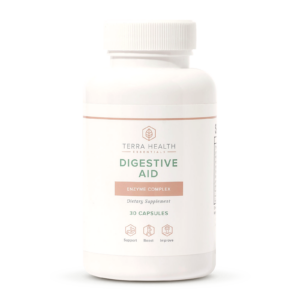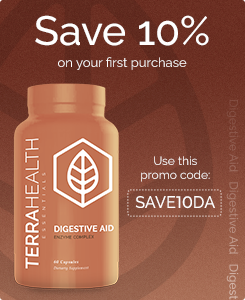, IBS is a big deal. In an international survey of IBS sufferers some said they would give up 25% of their lives to live symptom-free. But whilst there is no doubt that IBS is an extremely debilitating illness, there is hope. Symptoms can be drastically reduced and even eliminated once the right treatment plan is in place! You just have to know where to start. If you suffer from IBS, adjusting your diet can have a dramatic impact on your symptoms and often eliminate them completely. Research has shown that 75% of people living with IBS can benefit from a low FODMAP diet. This is highly recommended by physicians alongside stress management and regular exercise.
What are FODMAPs?
The FODMAPs acronym stands for Fermentable Oligosaccharides, Disaccharides, Monosaccharides, and Polyol. These are short-chain carbohydrates that move through your small intestine without getting properly digested, which can lead to common digestive complaints such as gas, bloating (bloating affects up to 96% of people with functional gastrointestinal disorders!), and stomach pain.
The idea of the FODMAP diet is to eliminate all foods containing FODMAPs from your diet and slowly reintroduce them to see which foods trigger these symptoms for you. Once you know which foods are causing your issues, you can continue to eliminate or reduce your intake.
It’s worth noting that FODMAPs aren’t actually bad for you in general. Some FODMAPs support good gut bacteria, so they should only be restricted or avoided if you can’t tolerate them. But if you experience regular stomach discomfort after eating, you’re probably one of those people.
FODMAPs can be broken up into four groups of dietary sources:
- Oligosaccharides: Various fruit and vegetables, wheat, rye, legumes.
- Disaccharides: Milk, soft cheese, yogurt – basically anything with lactose.
- Monosaccharides: Various fruits such as apples, pears, and figs, sweeteners such as agave nectar and honey. The culprit carb here is fructose.
- Polyols: Various fruit and vegetables, and low-calorie sweeteners.
How to Start a Low FODMAP Diet
Step 1: Restriction
To start off with this diet you have to avoid all high-fodmap foods. You’ll find a great list of these here. This might look like a long list, but don’t worry – it won’t last forever! You should restrict these foods completely for about 4 – 8 weeks. Once you start to notice substantial relief from your digestive symptoms, you can move onto step 2.
 Step 2: Reintroduction
Step 2: Reintroduction
See, we told you it wasn’t forever! In this phase, you can slowly start to reintroduce high-FODMAP foods to your diet. This will help you to figure out which type of FODMAPS you can tolerate and how much. Very few people will be sensitive to every single FODMAP so there should be a few you can handle.
Each specific food should be tested for 3 days on a one by one basis and you can keep track however you please. Some people like to use an app or some prefer a simple notepad. But you need to stick to a low-FODMAP diet during this phase, even if you find specific high-FODMAP foods are tolerable for you.
If reintroducing some high-FODMAP foods causes uncomfortable digestive issues, try not to worry. These symptoms will go away once the food is removed from your diet.
Step 3: Personalization
This is where you get to modify the low FODMAP diet so that it’s tailored specifically to your FODMAP responses and tolerance. This is a really important stage because you don’t want to be stuck with a super restricted diet forever. By modifying the FODMAP diet to allow for a variety of foods you can tolerate – even in small amounts – you will improve your overall gut health as a result.
 Patience is Key!
Patience is Key!
This process can take up to 6 months at times and it might take a few weeks to figure out exactly which foods are triggering your IBS, so it’s important to be patient. The majority of people will respond positively to this diet, it just takes some time to get right.
With that said, studies have shown that around 30% of people don’t see any improvement from the low-FODMAP diet. If the diet hasn’t worked for you, you should also make absolutely sure that your low-FODMAP foods don’t contain hidden sources of FODMAPs. You can do this by triple-checking the ingredients lists for items like garlic and sorbitol which can provoke symptoms in even tiny amounts.
 Rapid Relief From Pain, Gas, and Bloating
Rapid Relief From Pain, Gas, and Bloating
We have developed a specialized Digestive Aid supplement to provide the relief you need from the symptoms of IBS when you experience a flare-up. AND we’re giving our loyal blog readers a whopping 30% discount so you can try it out and see the results for yourself!
To avail of this discount just use the code: nomorebloating30 when placing your order.
Don’t forget to follow us on Facebook where you can contact us anytime with questions or a customized treatment plan!

